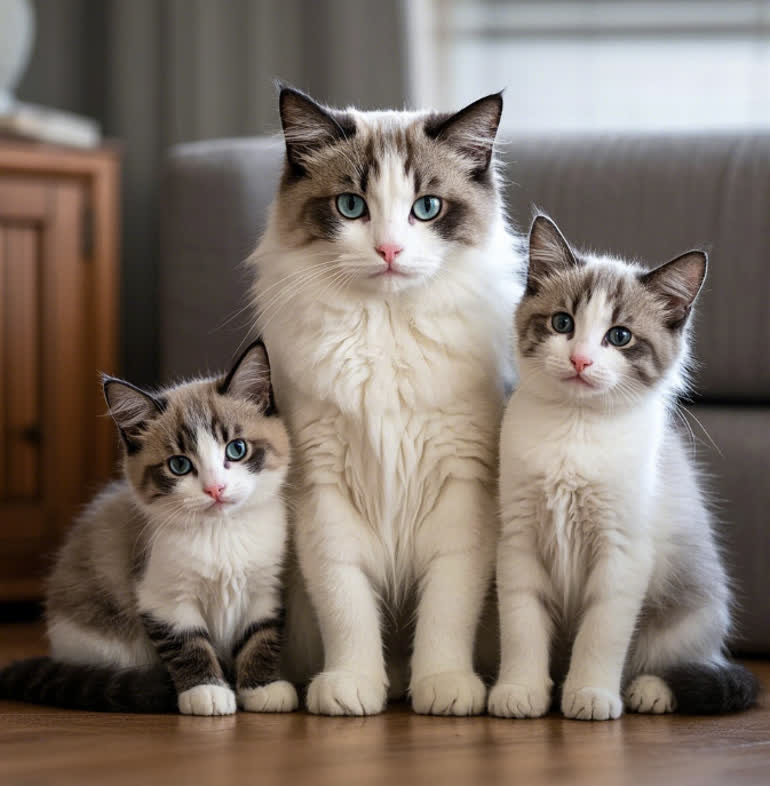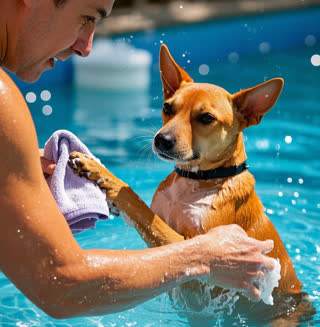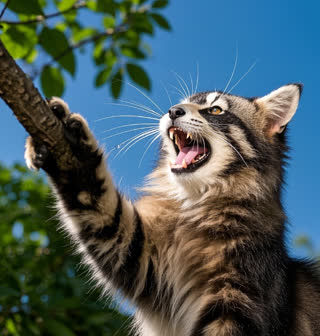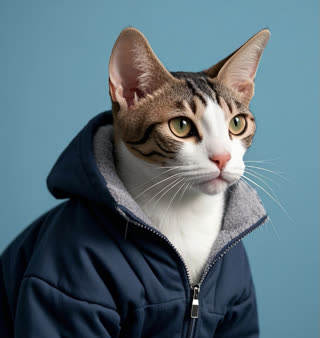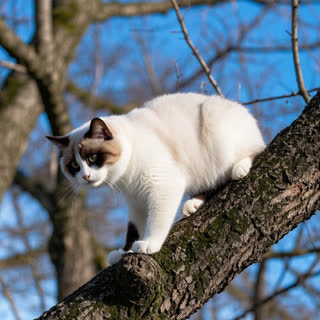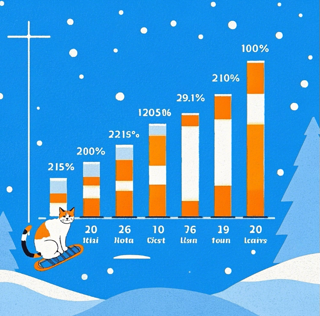The Snowshoe cat breed, with its striking blue eyes and distinctive "snowshoe" white paws, has captivated cat enthusiasts for decades. Whether you’re drawn to their affectionate personality or their unique Siamese-American Shorthair hybrid lineage, deciding between Snowshoe cat breed adoption vs breeder is a critical first step. This guide explores the nuances of adopting versus purchasing from a breeder, offering insights to help you make an informed, ethical choice tailored to your lifestyle and values.
Understanding the Snowshoe Cat Breed
Snowshoe cats are a rare hybrid breed developed in the 1960s, combining the vocal charm of Siamese cats with the sturdy build of American Shorthairs. Known for their sociable nature and adaptability, they thrive in homes where they receive ample human interaction. Their coat darkens with age, often developing rich brown hues, and their blue eyes remain a constant hallmark of the breed. While adoption options exist through rescue organizations, purchasing from a reputable breeder ensures access to pedigreed kittens with documented health histories.
Snowshoe Cat Breed Adoption: Pros and Cons
Pros of Adoption:
Saving a Life: Rescue organizations like Snowshoe Rescue (snowshoe.rescueme.org) specialize in rehoming Snowshoes, many of whom are surrendered due to owner circumstances rather than behavioral issues.
Cost-Effective: Adoption fees typically range from 100–300, covering vaccinations, spaying/neutering, and microchipping—significantly lower than breeder prices.
Adult Cat Benefits: Adopting an adult Snowshoe allows you to bypass the demanding kitten phase and assess their temperament upfront.
Cons of Adoption:
Limited Availability: Snowshoes are rare, so rescue options may be sparse depending on your location.
Unknown Background: Some rescue cats may have undisclosed health or behavioral challenges.
Purchasing from a Breeder: What to Expect
Pros of Reputable Breeders:
Health Guarantees: Ethical breeders, such as those listed on TICA (tica.org), prioritize genetic testing to eliminate hereditary conditions like hypertrophic cardiomyopathy (HCM). For example, Ragdoll Princess breeders in Texas ensure their cats are HCM/PKD1-negative.
Pedigree Documentation: Registered breeders provide TICA or CFA certification, confirming lineage and breed standards.
Kitten Socialization: Breeders often raise kittens in home environments, ensuring early socialization and exposure to household routines.
Cons of Breeders:
High Costs: Snowshoe kittens from breeders can cost 1,000–2,500, depending on pedigree and rarity.
Waitlists: Reputable breeders may have long waiting periods due to limited litters.
Ethical Considerations in Snowshoe Cat Breed Adoption vs Breeder Decisions
Avoiding Unethical Practices: The CFA Code of Ethics mandates breeders to prioritize animal welfare, including proper veterinary care and humane living conditions. Always verify certifications and visit catteries in person or via video tour.
Rescue Advocacy: Adopting supports organizations working to reduce overpopulation. Snowshoe Rescue, for instance, has facilitated over 1,357 adoptions nationwide.
Health and Longevity: Adoption vs Breeder Comparisons
Rescue Cats: While generally healthy, rescued Snowshoes may require additional vet visits for undiagnosed issues. For example, Munchkin cats (a similarly rare breed) face spinal health risks due to genetic mutations, though Snowshoes are less prone to such issues.
Bred Kittens: Reputable breeders mitigate risks through DNA testing. Ragdoll Princess, for instance, screens for HCM and PKD1, aligning with CFA guidelines.
How to Choose: A Step-by-Step Guide
Assess Priorities: If pedigree and kittenhood are non-negotiable, a breeder may suit you. For budget-conscious or rescue-focused individuals, adoption is ideal.
Research Thoroughly: Use TICA’s breeder directory or GoodBreeder.org to find ethical sources. For adoptions, check Snowshoe Rescue’s state-by-state listings.
Ask Questions: Breeders should openly discuss health testing, while rescues should disclose behavioral assessments.
The Snowshoe cat breed adoption vs breeder decision hinges on your values, budget, and lifestyle. Adoption offers a compassionate, cost-effective path, while breeders provide predictability and pedigree assurance. Whichever route you choose, prioritize transparency and ethics to welcome a healthy, happy Snowshoe into your home.
By balancing rescue advocacy with responsible breeding practices, you contribute to the welfare of this remarkable breed—ensuring every Snowshoe finds a loving forever home.
